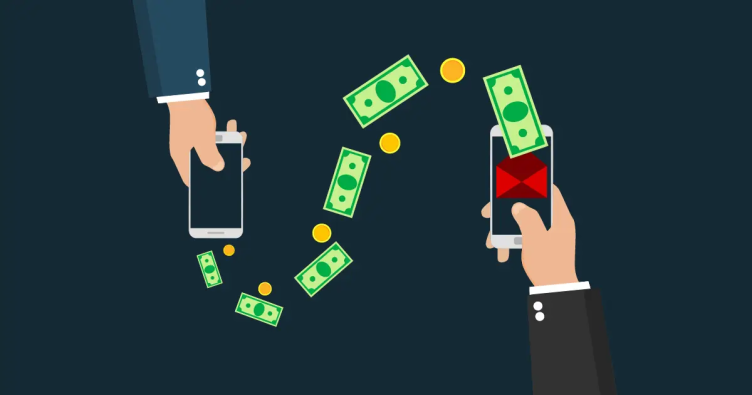October 17, 2023
The "Pay by Bank" Revolution: Why It's Time to Embrace Direct Account Payments
Financial landscape is evolving! Ever considered how Pay by Bank could save your business 90% in transaction fees and redefine customer experience? Dive into the future of transactions with our latest deep-dive.

The financial landscape is evolving, and Lynk's insights via their savings calculator highlight a potentially transformative shift. If we look at a typical subscription-oriented enterprise with 100,000 consumers and a monthly average transaction of $12, there's an opportunity to save over of $500,000 annually in fees by employing Lynk's alternative payment solution.
Yet, the novelty of this approach in the U.S. may cause hesitancy for businesses. Understandably, any shift in payment methodology requires due diligence and an assurance of net benefits.
Here's a comprehensive breakdown of why the "Pay by Bank" movement is not just a fleeting trend but a pivotal financial evolution.
1. "Pay by Bank" – Ushering in a Seamless Customer Journey
Direct Transactions
: "Pay by Bank" is predicated on an Account-to-Account (A2A) model. This bypasses the traditional need for intermediaries, such as credit or debit cards. Notably, the lack of extra account setups or processes makes transactions quicker and less cumbersome.
Multifaceted Advantages
:- Potential for consumer savings, given the reduced transactional costs, which can be shared by merchants. - Enhanced fraud security due to the robust authentication systems banks have in place along with our proipritery bank-approved fraud prevention solution. - A boon for individuals wary of accumulating credit card debt or those who have had past issues with credit.- For recurring payments, the direct bank approach ensures continuity and reliability, given bank accounts aren’t susceptible to physical loss or expiry.
2. The Rapid Evolution of the Payment Landscape
Historically, while credit cards have held a stronghold in U.S. e-commerce, the emergence of novel payment solutions proves the adaptability of consumer behavior. Consider the "Buy Now, Pay Later" (BNPL) phenomena. In just a year, its market penetration surged from 1.6% to 3.8% of North American e-commerce sales, representing billions in transaction volume. This underlines an appetite for flexible, consumer-centric payment solutions.
Given effective merchant promotions and consumer education, the "Pay by Bank" strategy has the potential for a similar, if not more rapid, adoption trajectory.
3. A Paradigm Shift in Operational Costs
Transitioning to "Pay by Bank" isn't just about enhanced user experience; the financial implications are profound. Transactions could cost up to 90% less compared to traditional credit card systems. But before making the leap, businesses should conduct a holistic financial audit:
Gauge the current expenditure tied to card swipe fees, payment fraud incidents, and other payment methods, including digital wallets and BNPL solutions.
For subscription-based models, assess the financial impact of involuntary churn, primarily caused by expired, stolen, or misplaced cards.
Armed with these insights, businesses can project the substantial daily, monthly, and annual savings achievable through "Pay by Bank".
4. Elevating Checkout Conversion: A Closer Look
Cart abandonments are a persistent e-commerce challenge. Research indicates that:
18% of consumers back out due to trust issues related to credit card data sharing.
17% are deterred by protracted or complex checkout processes.
4% face hurdles due to declined credit cards.
The "Pay by Bank" approach can systematically address these pain points. It ensures data protection, streamlines the checkout flow, and assures transaction success (barring insufficient funds). This results in increased conversion rates, directly enhancing revenue streams.
Subscription Services: A Special Mention
For subscription-based platforms, approximately half of customer churn is attributable to failed payments, an inherent risk with card-based models. The "Pay by Bank" approach, being card-less, eradicates risks such as expiration or physical loss. Additionally, providers like Lynk deploy predictive analytics to preempt potential transaction hitches, effectively reducing involuntary churn rates.
Conclusion: The "Pay by Bank" Imperative
The "Pay by Bank" methodology, while nascent, holds the promise of drastically reduced costs and an enriched user experience. Already, platforms like Lynk can access over 90% of U.S. checking accounts, indicating a ripe ecosystem for this paradigm shift.
In a dynamic market defined by competitive pressures and economic volatilities, proactive adoption of such innovative solutions can offer a distinct competitive edge. For a deeper exploration of how "Pay by Bank" can revolutionize your business operations, we invite you to engage with us by clicking here.
